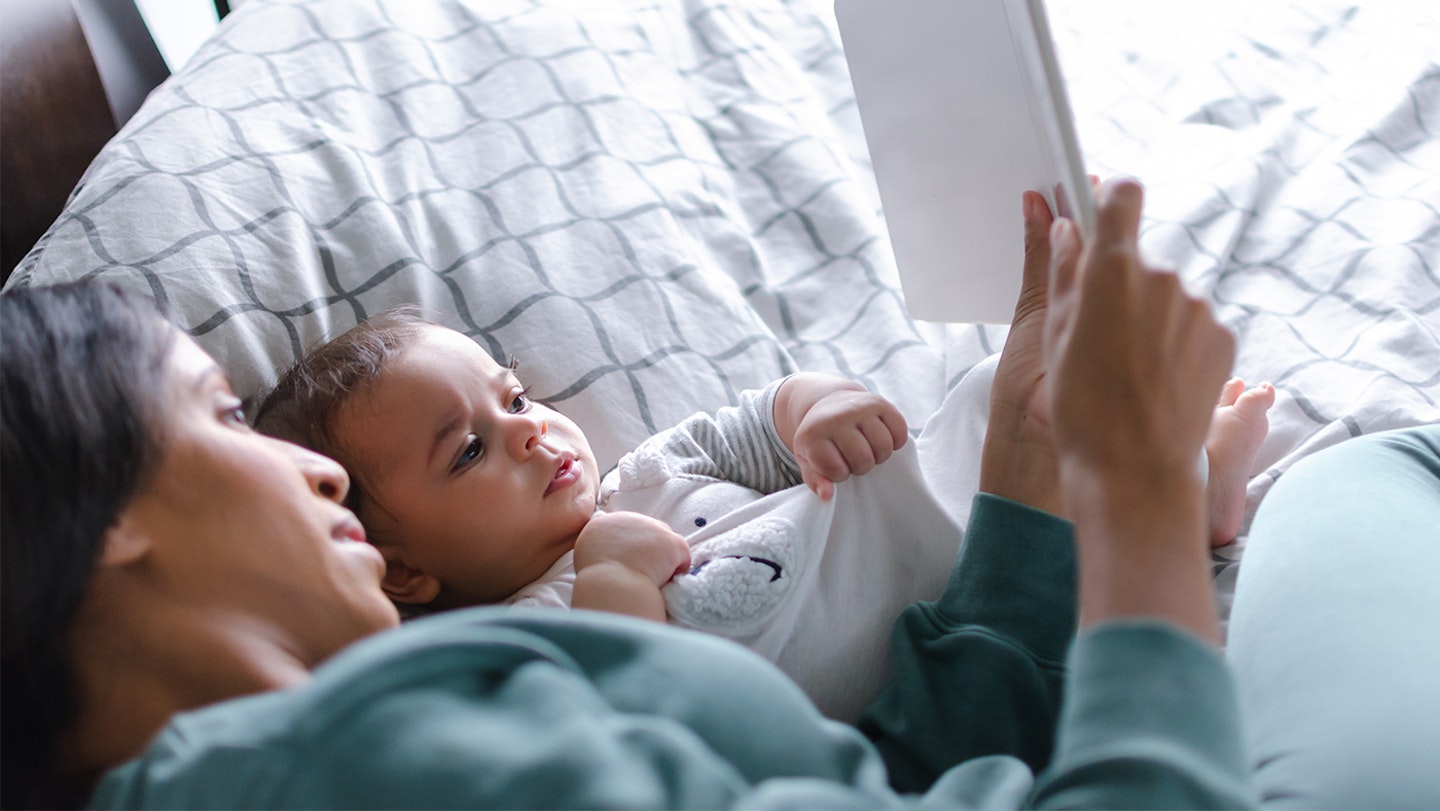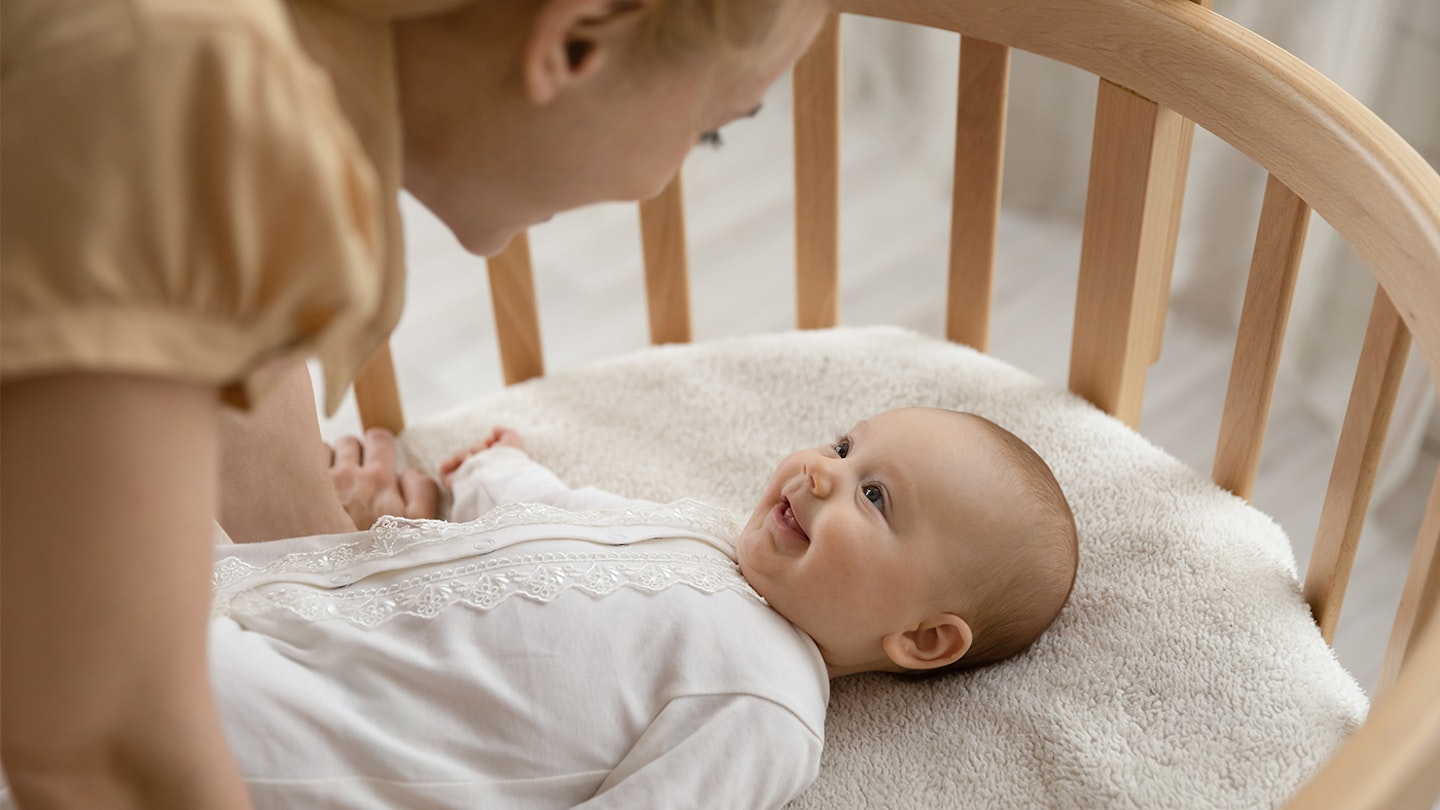When your baby is small, sleep is a precious commodity and it may feel like the only way you can get them to sleep is by holding them in your arms.
Cuddling your baby is an amazing thing and a wonderful bonding experience for both of you. But there may be times when you feel like you want your arms back to do other things.
You may simply want to know how to get your baby to settle themself in their cot, crib or Moses basket so you don’t have to worry about accidentally waking them up when you decide you want to lay them down.
We spoke to four different baby sleep experts for their top tips on getting your baby to sleep without being held.
A consistent bedtime routine
Kirsty Ketley, parent consultant and Early Years expert, says consistency is the key to getting your baby to sleep well.
"A good, consistent bedtime routine is a must," she says. "You can start establishing this from around three months and I would advise definitely by six months. Creating good sleep habits early on really helps later.
"Start in the hour before baby is tired. So if they usually sleep at about 7pm, start your routine at about 6pm. Give your baby a warm bath and massage and read them a story and make sure the room is dimly lit.
"Don’t allow your baby to sleep while feeding, make sure they go down drowsy but awake. Ensure the room is totally dark and the right temperature and if they’re six months or older, use a comforter such as cuddly or a muslin cloth."

Don’t worry if you’re happy to keep holding
Lauren Peacock is an infant sleep consultant at Little Sleep Stars and she says holding your baby while they fall asleep is only a problem if you think it is.
She says: "The first thing I always suggest a parent considers is whether holding their child to sleep is actually creating a problem. Contrary to popular belief, some babies who fall asleep in arms transfer into bed and sleep beautifully!
"Assuming the time has come to change things, a little preparation can go a long way. For a baby who falls asleep in arms, that is often their only or strongly dominant cue for sleep.
"So, if they are placed in their cot to fall asleep, they really don't know what is being asked of them. Spending a little time creating some positive, sustainable sleep signals, for example, using an infant-safe pillow spray, introducing an age-appropriate comforter or having a special bedtime ‘sign-off’ phrase, can help a little one to understand that it's time to fall asleep - whether they are in arms or their sleep space.
"The idea is to introduce the additional cues alongside still holding to sleep for a good few weeks, before moving on to supporting a baby to fall asleep in a different way."
Keep calm and carry on
Lyndsey Hookway, holistic sleep coach and author of Let’s talk about your new family’s sleep, says keeping calm while trying to get your baby to sleep is key.
"Babies often sense our desperation and this makes them feel nervous," she explains. "I am frequently explaining that you can't sleep with your foot on the gas pedal. This means that if you're stressed, or sense that someone else is stressed, you can't sleep easily.
"Instead of thinking 'I have to get my baby to go to sleep', think 'I have to get my baby to calm down'. Once they're less stressed, sleep will come more easily, and this starts with us first calming ourselves, taking a step back, a deep breath, and finding some peace."

Try a sling or pram
"The easiest way to get your arms back is often to try another sleep location that involves contact or motion. This might be a baby carrier/sling, or a pushchair/buggy/pram," Lyndsey suggests.
"Often, babies will accept these locations because they still either involve being very close to you, or having some soothing movement. Many people will frame this negatively, telling you that you have swapped one sleep 'crutch' for another. Don't listen to this.
"If it's a strategy that is more sustainable for you, then it's a positive thing. If you really want your baby to be able to nap in a cot or crib, my favourite tip is to be alert to their individual signs of readiness for sleep.
"I hear from thousands of parents who are so terrified that their baby will become 'overtired' that they daren't wait a while longer to see if that helps their baby fall asleep more easily. Sleep is regulated by the circadian rhythm and sleep pressure.
"This mechanism is the chemical drive to fall asleep that builds with the amount of time we spend awake. The chemical adenosine builds in our brain the longer we spend awake - causing the 'pressure' to fall asleep. Babies (just like us!) find it really hard to fall asleep if their sleep pressure is low."
Work out the nap gap
Eve Squires, founder of Calm & Bright Sleep Support, recommends working out how long your baby can be awake before they start feeling tired – an interval of time she refers to as the nap gap.
She says: "Knowing how long your baby can be happily awake is a total game-changer. When babies go past it, they get an injection of adrenaline and cortisol into their bloodstream making them feel and appear wide awake.
"This results in us keeping them up even longer to tire them out and avoid a battle, but this needn’t happen when they go down earlier. We have an easy-to-remember tool for working out the nap gap for babies in the first year.
"The nap gap at one month of age is 45 minutes and it increases by 15 minutes each month. This is of course a flexible tool, but it’s a really great place to start."
